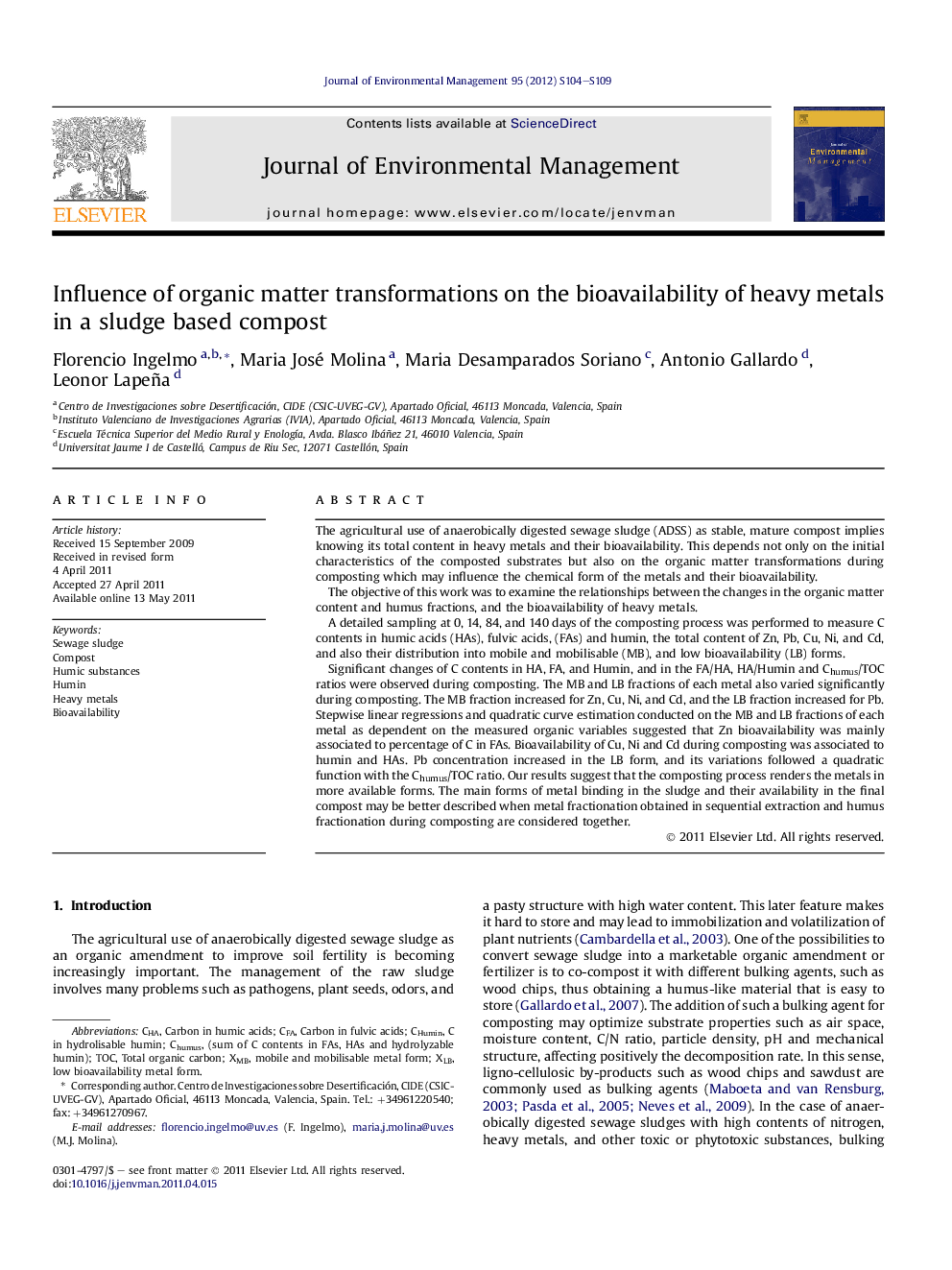| Article ID | Journal | Published Year | Pages | File Type |
|---|---|---|---|---|
| 1057036 | Journal of Environmental Management | 2012 | 6 Pages |
The agricultural use of anaerobically digested sewage sludge (ADSS) as stable, mature compost implies knowing its total content in heavy metals and their bioavailability. This depends not only on the initial characteristics of the composted substrates but also on the organic matter transformations during composting which may influence the chemical form of the metals and their bioavailability.The objective of this work was to examine the relationships between the changes in the organic matter content and humus fractions, and the bioavailability of heavy metals.A detailed sampling at 0, 14, 84, and 140 days of the composting process was performed to measure C contents in humic acids (HAs), fulvic acids, (FAs) and humin, the total content of Zn, Pb, Cu, Ni, and Cd, and also their distribution into mobile and mobilisable (MB), and low bioavailability (LB) forms.Significant changes of C contents in HA, FA, and Humin, and in the FA/HA, HA/Humin and Chumus/TOC ratios were observed during composting. The MB and LB fractions of each metal also varied significantly during composting. The MB fraction increased for Zn, Cu, Ni, and Cd, and the LB fraction increased for Pb. Stepwise linear regressions and quadratic curve estimation conducted on the MB and LB fractions of each metal as dependent on the measured organic variables suggested that Zn bioavailability was mainly associated to percentage of C in FAs. Bioavailability of Cu, Ni and Cd during composting was associated to humin and HAs. Pb concentration increased in the LB form, and its variations followed a quadratic function with the Chumus/TOC ratio. Our results suggest that the composting process renders the metals in more available forms. The main forms of metal binding in the sludge and their availability in the final compost may be better described when metal fractionation obtained in sequential extraction and humus fractionation during composting are considered together.
